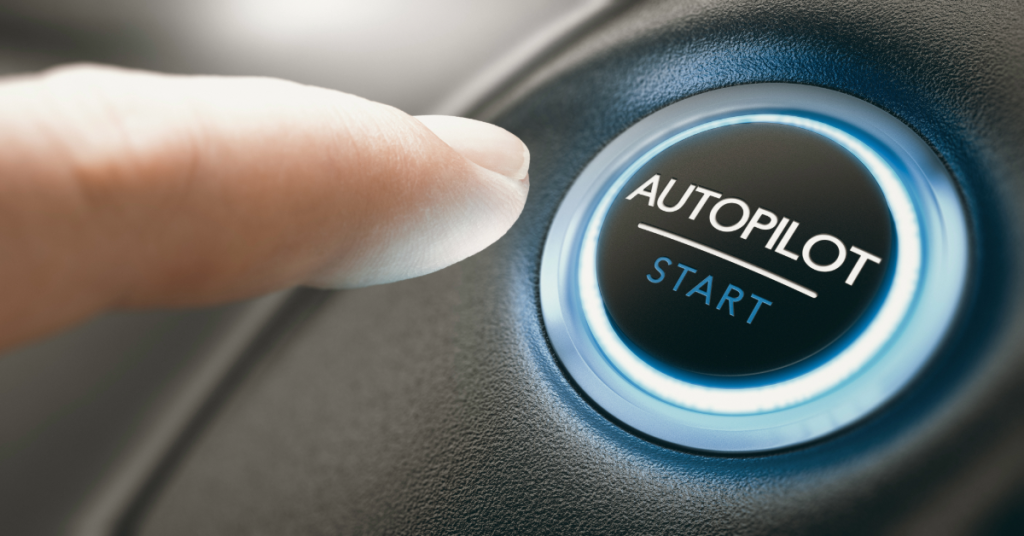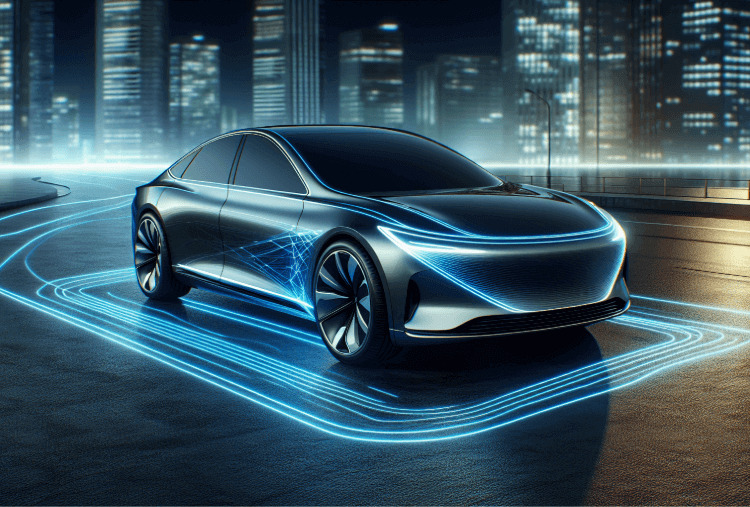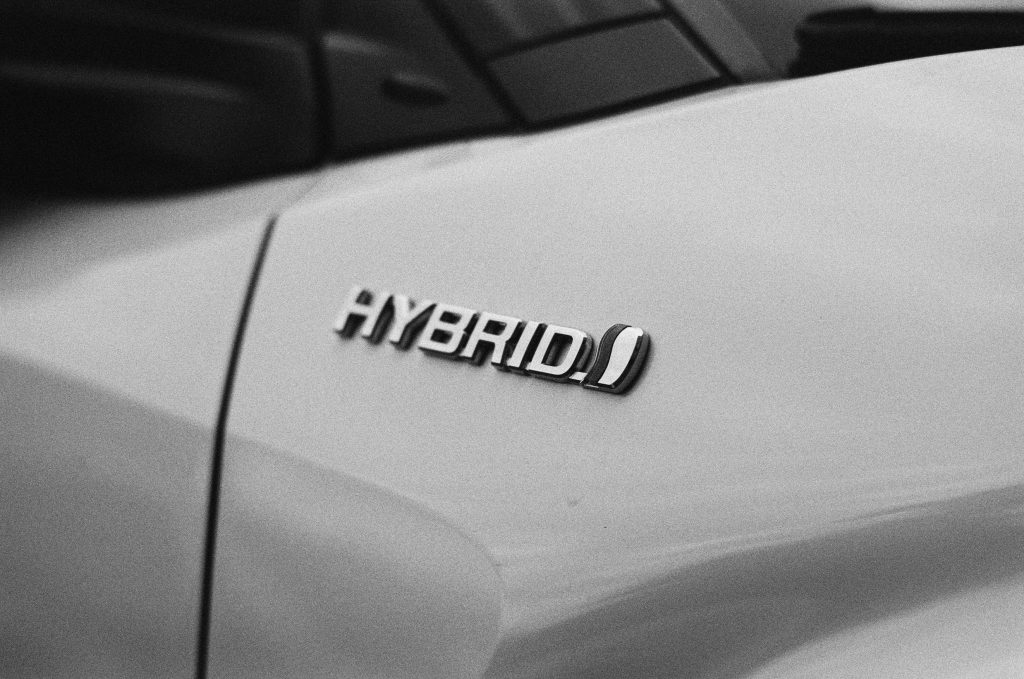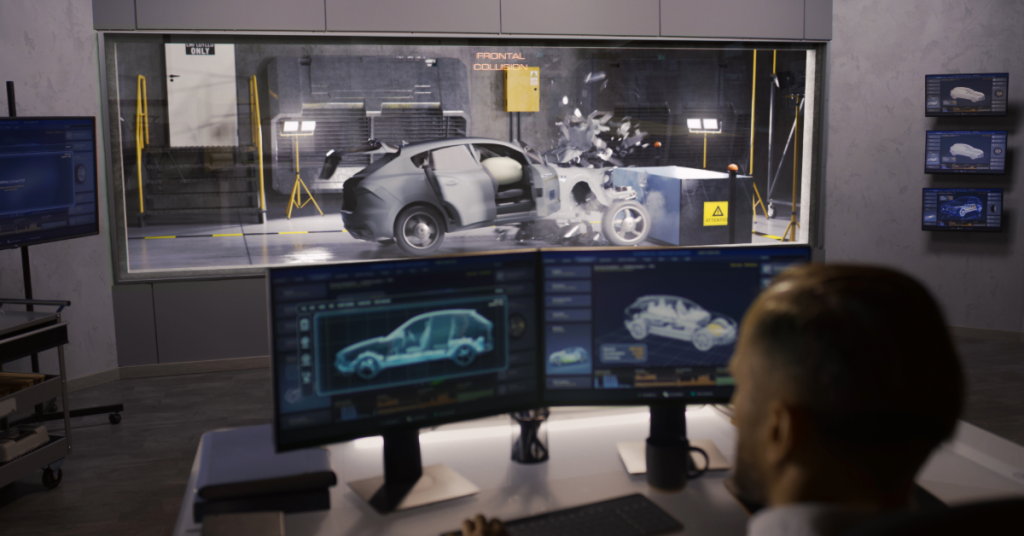Key Takeaways
- Autopilot in cars is a semi-autonomous driver assistance system that enhances safety and convenience.
- Popular features include Adaptive Cruise Control, Lane Keeping Assist, and Automatic Emergency Braking.
- Autopilot systems come with limitations, drivers must understand the responsibilities associated with using them to ensure safe driving.
Understanding Autopilot in Cars
The introduction of autopilot in cars has significantly transformed the automotive industry. Autopilot is an advanced driver assistance system designed to increase safety and convenience for drivers, allowing them to navigate on autopilot in certain conditions. The intent of autopilot is to lessen the overall burden of the driver while ensuring a driver monitoring system is in place to maintain safety.
The two major components of an autopilot system are how it works and the different levels of autonomy it offers.
How Autopilot Works
Autopilot systems in cars employ a variety of technologies to function efficiently. For instance, Tesla vehicles are equipped with eight external cameras and advanced vision processing technology, providing a 360-degree view of the surroundings. Tesla Vision, a camera-based system, has replaced the use of radar for Autopilot features in the North American market. This modification has resulted in enhanced safety and performance of Tesla Autopilot.
While Tesla makes use of its in-house technology, other car manufacturers utilize technology from external providers. For instance, Volvo employs the Mobileye EyeQ 3 platform, a front-facing camera, and Delphi’s RaCAM radar and camera sensor fusion system for its autopilot system. Autopilot technology is supported by Mobileye’s EyeQ line of visual perception chips.
The level of sophistication of these systems varies across different car models. For instance, Volvo’s upcoming autopilot system, known as “Ride Assist” or “Highway Assist”, will employ the NVIDIA Orin chipset, front-facing Luminar LiDAR, and Zenseact on the software side. This suggests that autopilot technology continues to evolve, increasingly relying on camera-based systems and sophisticated chips for enhanced capability.
Levels of Autonomy
The levels of autonomy in autopilot systems refer to the extent to which the vehicle is capable of driving itself without human intervention. These levels range from basic driver assistance to full autonomy. At Level 1, an autonomous car can execute tasks such as providing steering assistance or braking assistance in certain situations.
At Level 2, the vehicle is equipped to take control of most steering, acceleration, and braking functions. However, this level of autonomy still requires the driver to remain alert and capable of intervening when necessary. This means that while the vehicle can assist the driver in navigating traffic and maintaining speed, the driver still holds the primary responsibility for controlling the vehicle.
On the other hand, Level 4/5 autonomy denotes full automation of driving, where the vehicle can operate independently without any human intervention. However, achieving this level of reliability requires regulatory approval and billions of miles of experience far superior to human drivers. This level of autonomy is still a work in progress and is the ultimate goal of autonomous vehicle technology.
Popular Autopilot Features
Autopilot systems come with a suite of features that contribute to safer and less stressful driving experiences. These features, which include Adaptive Cruise Control (ACC), Automatic Lane Centering (ALC), and Lane Keeping Assist (LKA), are designed to augment the driver’s capabilities and provide an extra layer of safety.
Many car manufacturers offer these features, with some providing advanced versions. For instance, Tesla offers a comprehensive suite of Autopilot features, including lane-departure warning, lane-keep assist and adaptive cruise control. Hyundai and Kia also offer advanced features such as Lane Following Assist (LFA) and Smart Cruise Control with Stop and Go (SCC), as well as Highway Drive Assist (HDA).
These advanced features not only improve the driving experience but also enhance the overall safety of the vehicle.
The following sections will provide a detailed analysis of three fundamental autopilot features: Adaptive Cruise Control, Lane Keeping Assist, and Automatic Emergency Braking.
Adaptive Cruise Control
Adaptive cruise control (ACC) is a semi-autonomous driving technology that uses sensors to maintain a safe distance from the vehicle ahead. It adjusts the vehicle’s speed automatically based on the traffic conditions, ensuring that you don’t get too close to the vehicle in front. This feature is particularly beneficial on highways, where maintaining a constant speed and safe distance from other vehicles is essential for safe driving.
Modern vehicles implement ACC using a variety of sensors and technologies. For instance, Tesla vehicles are equipped with forward-looking radar and a powerful onboard computer that enables the ACC feature. This system can adjust the vehicle’s speed in real-time, ensuring a smooth driving experience.
The benefits of ACC extend beyond comfort and convenience. By automatically adjusting the vehicle’s speed based on traffic conditions, ACC can help lessen driver fatigue and tension, as well as augment fuel efficiency. This makes it a valuable feature for long drives and heavy traffic conditions.
Lane Keeping Assist
Lane Keeping Assist is another key feature of autopilot systems. As the name suggests, this feature assists in maintaining the vehicle’s position within its lane. It uses sensory input from:
- a lane departure camera
- infrared sensors
- lasers
- a steering wheel angle sensor
to detect the vehicle’s position within the lane.
When the system detects that the vehicle is drifting out of its lane, it issues alerts to the driver and can also gently steer the car back towards the center of the lane. This feature is particularly useful on highways and multilane roads, where maintaining lane discipline is crucial for safe driving.
Automatic Emergency Braking
The Automatic Emergency Braking (AEB) is a car safety system that:
- Senses potential collisions
- Automatically triggers the brakes to mitigate or prevent the impact
- Uses sensors, such as radar or cameras, to detect potential collisions with vehicles or pedestrians.
When a potential collision is detected, the AEB system will provide a forward collision warning to the driver and will automatically apply the brakes if the driver does not respond in time. This can significantly reduce the chances of a collision or mitigate the impact if a collision is unavoidable.
The AEB system is a major breakthrough in vehicle safety technology. Test runs have indicated that AEB can prevent rear-end collisions and reduce impact speed by an average of 62 percent at 40 mph. This establishes it as a vital feature in contemporary vehicles with autopilot systems.
Top Cars with Autopilot Systems
With the evolution of autopilot technology, various car models and manufacturers have embraced this innovation. Each offers a unique blend of features, enhancing safety and convenience for drivers.
Here is a detailed examination of some leading cars with autopilot systems.
Tesla Models
Tesla is a pioneer in integrating autopilot technology into its vehicles. In fact, Tesla’s autopilot and full self-driving capabilities have set the benchmark for other car manufacturers in this domain. Tesla’s autopilot systems include:
- Enhanced Autopilot features such as Traffic Light and Stop Sign Control
- Autosteer
- Navigate on Autopilot
- Auto Lane Change
- Summon
These features provide advanced driver assistance, including highway driving assist, making driving safer and more convenient, thanks to the driver assistance package.
The Full Self-Driving Capability for the Tesla Model S includes Enhanced Autopilot features such as Traffic Light and Stop Sign Control, an active traffic-sign recognition system that slows the vehicle to a stop at traffic lights and stop signs, as well as Autosteer, which assists in keeping the car in its lane when traveling at a set speed. This suite of features enhances safety and convenience, making Tesla a leader in the realm of autonomous driving.
The Enhanced Autopilot system for the Tesla Model S costs $6,000, making it a significant investment for those seeking a semi-autonomous driving experience. However, considering the extensive suite of features and the potential for increased safety and convenience, it could be a worthwhile investment for many drivers.
General Motors Vehicles
General Motors (GM) is another key player in the area of autopilot technology. The company’s Super Cruise technology is a notable feature in its portfolio. Super Cruise utilizes technology from leading vendors such as Intel’s Mobileye platform and Trimble RTX for precise positioning. It also features forward-facing cameras, side cameras, radar, as well as an internal camera by FOVIO that holds the capability of eye tracking..
This technology is available in a range of GM’s vehicles including:
- GMC Sierra 1500 Denali and Denali Ultimate
- GMC Yukon Denali Ultimate
- GMC Hummer EV Pickup and SUV
- Cadillac Escalade, CT4, and CT5
- Chevrolet Silverado, Tahoe, and Suburban
- Cadillac LYRIQ
- Limited version on the Chevy Bolt.
The Cadillac Escalade, for instance, is equipped with a camera in the cabin that monitors the driver. This underscores GM’s commitment to safety and driver monitoring in their autopilot systems.
German Automakers
German automakers, including Audi, BMW, and Mercedes-Benz, have made significant strides in the development of autopilot systems. Each of these manufacturers offers unique features, showcasing the diversity in autopilot technologies across different car brands.
BMW, for instance, offers the Driving Assistant Pro with Extended Traffic Jam Assistant, leveraging the Mobileye EyeQ platform and control software from ZF. Mercedes-Benz, on the other hand, has developed an autopilot system that integrates map data with the driving system, aiding in deceleration when navigating curves.
Audi has equipped its A6, A8, and Q8 models with the autopilot system and plans to extend its availability to additional models. This highlights the growing incorporation of autopilot systems across a wide range of car models and manufacturers.
System Responsiveness
System responsiveness in autopilot systems signifies the capability of the system to promptly and precisely respond to modifications in the driving environment. It involves the system’s capacity to detect and interpret sensor inputs, make decisions, and execute actions in a timely manner. A responsive autopilot system can adjust to fluctuating road conditions, traffic scenarios, and unforeseen events, guaranteeing a smooth and secure operation. The responsiveness of an autopilot system greatly influences its overall effectiveness and the safety of the driver and passengers.
Autopilot systems respond to unexpected road scenarios by utilizing a combination of sensors, cameras, and algorithms. When the system identifies a potential hazard or obstacle, it can automatically apply the brakes, adjust the steering, or take other corrective measures to avoid a collision. The responsiveness of these systems varies across different car models, highlighting the need for comparisons and evaluations before choosing a vehicle with an autopilot system.
Driver Monitoring
Driver monitoring in autopilot systems involves active driver supervision, which includes:
- Tracking and monitoring the driver’s attention and engagement while the vehicle is in autonomous or semi-autonomous mode
- Utilizing sensors, cameras, and algorithms to analyze the driver’s behavior
- Ensuring the driver is prepared to assume control if necessary
When the system detects that the driver is not paying adequate attention to the road or appears drowsy, it can issue warnings or alerts to the driver to refocus on the road. This is an important safety feature that ensures that even when the autopilot system is active, the driver remains vigilant and ready to take over control of the vehicle if necessary.
Software Updates
Software updates are integral for the successful operation of autopilot systems. They can enhance system responsiveness, precision, and safety, as well as introduce new features and capabilities. Regular software updates are necessary to ensure that the system is up-to-date and functioning optimally.
Software updates for autopilot systems are generally released on a regular basis, with some manufacturers releasing updates every few months or more often. These updates can improve the system’s performance, fix issues, and introduce new features.
The implementation of software updates involves several steps:
- Development and testing of the update
- Distribution of the update to the devices
- Installation of the update on the autopilot system
- Configuration of the system
- Verification of the functionality of the updated system.
Neglecting autopilot software updates can result in safety concerns, regulatory compliance issues, and system malfunctioning.
The Future of Autopilot and Autonomous Driving
The field of autopilot and autonomous driving is undergoing rapid advancements, and we stand on the brink of experiencing some revolutionary developments in this domain. With the integration of 5G technology and the development of advanced driver assistance systems (ADAS), the global driverless car market is estimated to reach USD 93.31 billion by 2028.
Future trends and challenges will be examined in greater detail.
Regulatory Challenges
With advancements in technology, autonomous vehicles face several regulatory challenges, including:
- Legislative and regulatory barriers
- State-level regulations
- Product liability risk
- The need for regulatory developments to keep up with the technology.
Safety regulations ensure that autonomous driving technologies comply with safety standards and guidelines, evaluate reliability and performance, address liability issues, and define responsibilities in the event of accidents or malfunctions. However, the regulations pertaining to the use of autonomous vehicles vary by country and region.
In the United States, the National Highway Traffic Safety Administration (NHTSA) is responsible for the regulation of autonomous vehicles at the federal level. However, the regulatory landscape is complex and evolving, necessitating constant vigilance and updates from manufacturers and operators.
Technological Developments
The future of autopilot systems is set to be shaped by innovative technological developments. It is projected that fully autonomous vehicles could be available by 2025. Artificial intelligence (AI) is anticipated to have a considerable impact on the future of autopilot technology, as it enables the utilization of advanced capabilities such as machine learning algorithms, computer vision, and deep learning.
Machine learning is a vital component of the development of autonomous vehicle technology. These algorithms enable autonomous vehicles to make decisions in real-time, enhancing their ability to navigate complex environments. Moreover, wireless communication technologies like 5G and V2X are anticipated to have a notable impact on the development of autopilot systems, facilitating faster and more dependable communication between vehicles and infrastructure.
These advancements suggest that the autopilot systems of the future will be more efficient, safer, and capable of handling a wider range of driving scenarios. This will undoubtedly transform the way we drive and perceive transportation.
Safety Considerations and Responsibilities
While welcoming the convenience and improved safety offered by autopilot and autonomous driving technologies, understanding the safety considerations and responsibilities associated with these features is critical. This entails:
- Knowing when and how to use the autopilot features
- Understanding the limitations of these systems
- Being prepared to take control of the vehicle when necessary
Human Drivers vs. Autopilot
While autopilot systems offer numerous advantages, they are not a replacement for human drivers. Autopilot systems make driving decisions based on pre-programmed algorithms and sensor data, while human drivers rely on their perception, judgment, and experience.
However, autopilot systems have been demonstrated to be advantageous over human drivers in scenarios such as accident prevention and overall driving decision-making. Moreover, research has indicated that human driving decision-making can be characterized by poor decisions that can have fatal consequences.
Despite these advantages, it’s important to remember that autopilot systems are not foolproof and their reliability can vary. At present, the driver of the vehicle is still held legally accountable in the majority of circumstances when Autopilot is in use.
Common Misconceptions
Several misconceptions about autopilot in cars require clarification. One common misconception is that self-driving cars will be like regular cars without drivers and that all cars will become autonomous once the software is developed. This is not the case. Autopilot systems in cars are semi-autonomous, meaning they do not possess the capacity to independently navigate a vehicle.
Another misconception is that autonomous vehicles cannot make decisions over life and death. In reality, autopilot systems are designed to prevent accidents and enhance safety. They use sensors and algorithms to detect potential collisions and can take proactive measures, such as applying the brakes, to prevent accidents.
It’s also worth noting that while the hype around self-driving cars might seem exaggerated, the technology is progressing at a rapid pace. It’s important to stay informed and understanding the actual capabilities and limitations of these systems rather than relying on misconceptions and hype.
Summary
In conclusion, autopilot systems in cars are revolutionizing the driving experience, offering enhanced safety, convenience, and a glimpse into the future of autonomous driving. While these systems offer numerous advantages, they also pose challenges and responsibilities for drivers. As we navigate through this exciting era of semi-autonomous driving, it’s vital to stay informed about the capabilities and limitations of these technologies, to ensure that we utilize them safely and responsibly.
Frequently Asked Questions
What is the autopilot mode in cars?
Autopilot is an advanced driver assistance system that reduces workload and enhances safety for drivers, featuring lane-centering and adaptive cruise control. It is designed to be used with full driver supervision and is essentially a more advanced version of cruise control.
Is autopilot in cars legal?
Autopilot in cars is legal. It is not classified as autonomous driving, so the driver remains in control and responsible for the vehicle. Autopilot can be thought of as an advanced form of cruise control.
Is Tesla the only self-driving car?
Tesla currently offers the most advanced autopilot features available for consumers, though other car manufacturers offer similar driver-assistance systems. However, there are no fully self-driving cars available yet.
What is the disadvantage of autopilot cars?
The potential downside of autopilot cars is the risk of a security breach, as they rely on sharing the same network protocol. This could expose them to hacking.
How does an autopilot system work?
An autopilot system uses sensors and technologies such as external cameras and vision processing technology to provide a 360-degree view of its surroundings. This allows it to safely and reliably operate without driver input.











